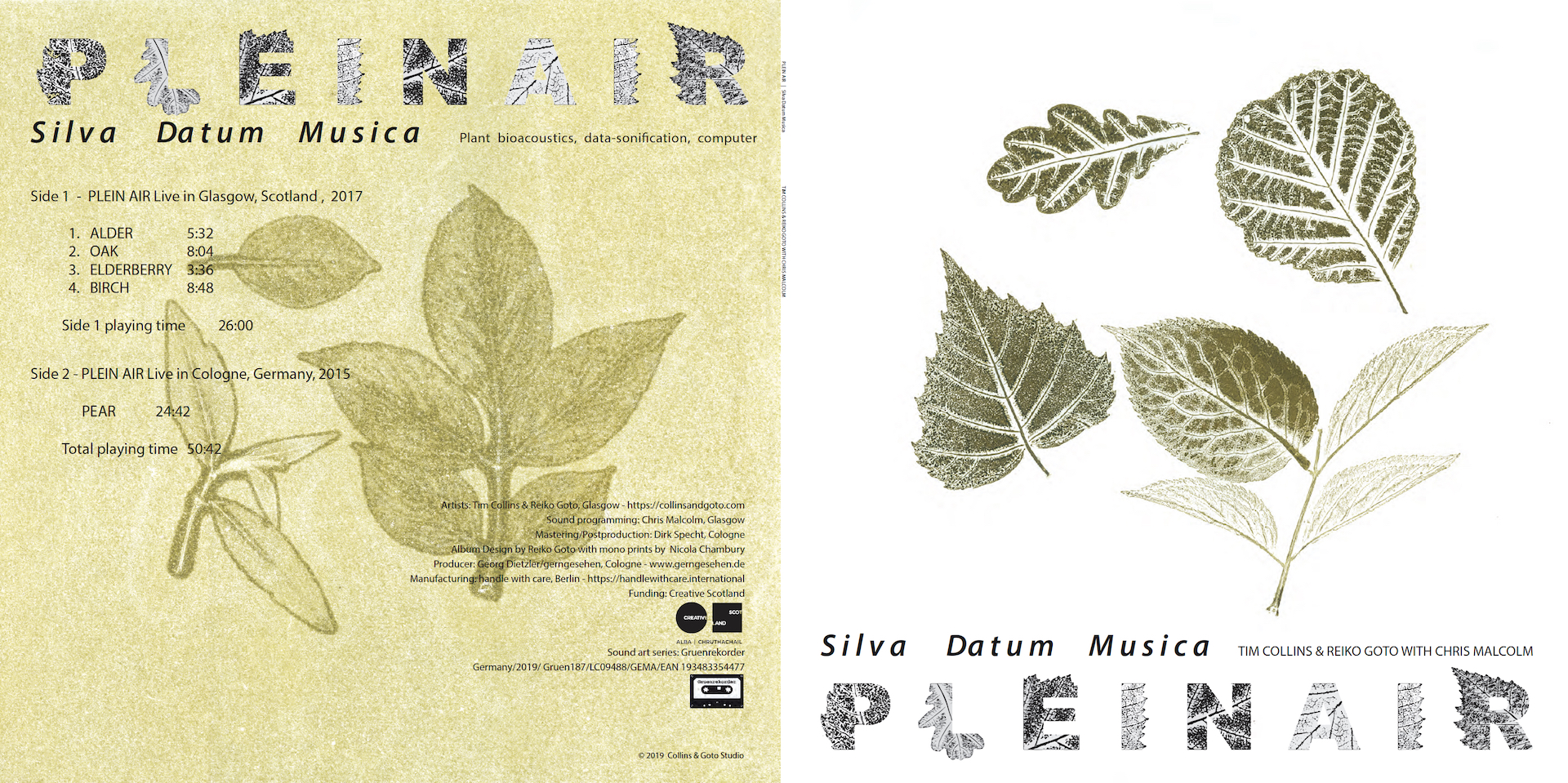“The photo on the innersleeve shows the interior of a glass domed building. In the centre sit two young trees in big black plant pots. They are surrounded by equipment stands, wires snaking from the leaves to the ground and up to a chipboard box. A pair of human legs, with what looks like a computer keyboard resting on their lap, extend from beneath the box to the floor. If the image conjures up some bizarre plant-machine-human hybrid straight out of the pages of a Donna Haraway manifesto, the truth is not far off. All the bulbous electronic bloops and clattery percussive slashes on Plein Air are derived from realtime data on the photosynthesis and transpiration rates of different plants. Must be one of the few shows where the band get their instruments from a tree nursery.”
Tim Collins and Reiko Goto first conceived of the project in Duke Forest, North Carolina. While visiting the Duke University Teaching and Research Laboratory there, the artists assisted a team of scientists measuring the reactions of the trees to carbon dioxide levels. From a forty-foot tall structure, they set up sensors and took measurements. And then a cloud passed momentarily in front of the sun. Immediately the sap rose, photosynthesis rates went up. It was the speed of the reaction, that sense of living immediacy, that proved such a revelation. They set out to “hear the tree” and enlisted Scottish programmer and software developer Chris Malcolm to help them realise the project.
Plein Air the album collects two live performances from Collins, Goto and Malcolm’s bio-acoustic set-up. The first recorded in the botanic gardens in Glasgow (the glass domed structure on the innersleeve) in 2017 and the second, a single 25-minute track drawn from a heritage pear tree, was produced in a small office in Cologne in 2015. Producer Georg Dietzler points out that the weather was calmer that day and, reflecting this, it’s a mellower, more minimal and repetitive take. On side A, however, under Scotland’s uncertain skies, the sound is as wild and untamed as nature itself.”
~Robert Barry in The Wire issue 429
